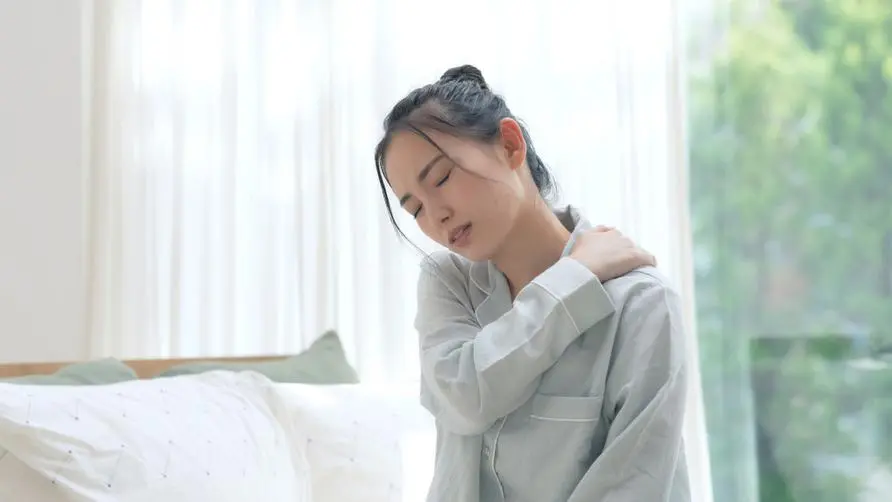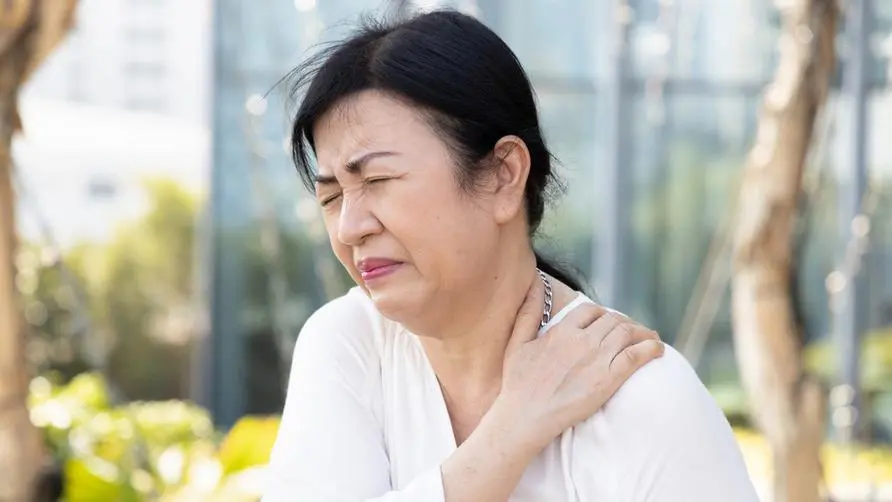Will frozen shoulder heal on its own? Are women more likely to have the disease? Medical appeal: Seek medical attention quickly when "not lifting" occurs

Will frozen shoulders actually heal on its own? Medical answer: There is a chance of remission in about 2 years!
“Frozen shoulder” is a common shoulder pain disease, which mostly occurs in middle-aged and elderly people aged 40-60 years old. This is also the origin of the name “frozen shoulder”. Dr. Li Yanyu, director of Renyi Pok Oi Rehabilitation Clinic, pointed out in the community that frozen shoulder, also known as frozen shoulder, the full name is “adhesive capsulitis”, which is caused by the inflammation and inflammation of the glenohumeral joint of the shoulder for unknown reasons. Fibrosis, the typical symptom is shoulder pain accompanied by a significant reduction in joint mobility.
Dr. Li Yanyu said that recently there was a middle-aged and elderly male patient in the outpatient clinic who suffered from severe pain in his shoulder. He had been seeing a doctor for 6 months and tried plastic surgery, massage and other methods, but his condition did not improve. “The patient said that the pain in his shoulder “increased with treatment” and that he could not lift his arm at all. He even wondered whether his joints had been “broken” by the orthopedist!” After evaluation and examination, the patient was diagnosed with frozen shoulder and had entered the hospital. “Freezing Period”. Therefore, not only will there be severe pain, but it may also be accompanied by the inability to lift the arm and poor joint mobility.
Dr. Li Yanyu further pointed out that from an epidemiological point of view, frozen shoulder is more likely to occur in women, and is more common in the left shoulder; in 15% of patients, frozen shoulder will appear in the other shoulder within 5 years. Generally speaking, the prognosis of frozen shoulder is generally good. Even without treatment, it will be relieved in about 2 years (an average of about 1-3.5 years). The recovery process can also be accelerated through rehabilitation and shoulder joint capsule expansion.
Does frozen shoulder also have disease stages? Should I seek medical treatment as soon as possible after the second period?
Is there also a stage for frozen shoulder? At what stage of progression does it require medical treatment? Dr. Li Yanyu explained that frozen shoulder can be roughly divided into the following four stages:
Pain period (within 3 months): Mainly shoulder pain, slightly limited range of motion, it is easy to misjudge during this period.
Freezing period (3-9 months): Extreme pain in the shoulder combined with reduced range of motion.
Freezing period (9-14 months): joint mobility is significantly reduced.
Thawing period (15-24 months): Pain and joint mobility are significantly improved.
Dr. Li Yanyu said that if the patient has entered the freezing or freezing period, appropriate treatment can be used to speed up recovery, such as the use of anti-inflammatory and analgesic drugs, manual therapy, exercise therapy, instrument therapy, shock wave therapy, etc., all of which have good results. If the effect of the above treatments is limited, arthroscopic surgery or ultrasound-guided shoulder joint capsule expansion can be further performed, and the symptoms are expected to be significantly improved.
Frozen shoulder makes people “don’t want to move when it hurts”! 3 ways to relieve pain through medical education and home rehabilitation
Dr. Li Yanyu emphasized that the “adhesiveness” of frozen shoulder will make patients feel pain whenever they move their shoulders. The more pain they feel, the less likely they are to move. This will lead to a vicious cycle of more severe shoulder adhesions and more obvious pain. Therefore, it is recommended that in addition to actively seeking treatment, patients can also practice the following three exercises at home to relieve shoulder discomfort:
Finger climbing stairs: Facing or side facing the wall, slowly climb up with your fingers from a lower position, and slowly lean your body against the wall. Then raise the shoulder to the limit of joint movement. Stop if you feel pain or get stuck. Climb ten times, doing 3 rounds each on the side and front.
Pendulum movement: Slightly bend the upper body and let the hand on the affected side naturally droop. You can hold a water bottle as an aid. Relax your arms and swing them back and forth, left and right, clockwise, and counterclockwise, 30 times each, once in the morning and once in the evening.
Pull the towel (auxiliary hand pulls the affected hand): Both hands are pulled by the towel. The auxiliary hand pulls the affected hand up to the limit, and finally stops for 10 seconds. Do this action 10 times, then change the assistant hand to pull the affected hand down and stop for 10 seconds, and do it 10 times again.
Dr. Li Yanyu emphasized that conservative treatment and exercise therapy must go hand in hand to achieve the desired effect in improving frozen shoulder. If there is a lack of exercise or continued inactivity of the joint, the symptoms may worsen again and the effect of conservative treatment will be weakened. Therefore, it is recommended that patients follow the doctor’s instructions and actively cooperate with the doctor’s treatment, which is the only way to recover from frozen shoulder as soon as possible.
References:
Mezian K, Coffey R, Chang KV. Frozen Shoulder. [Updated 2022 Jun 5]
Muscles Ligaments Tendons J. 2012 Sep 10;2(2):70-8. Print 2012 Apr.
Further reading:





